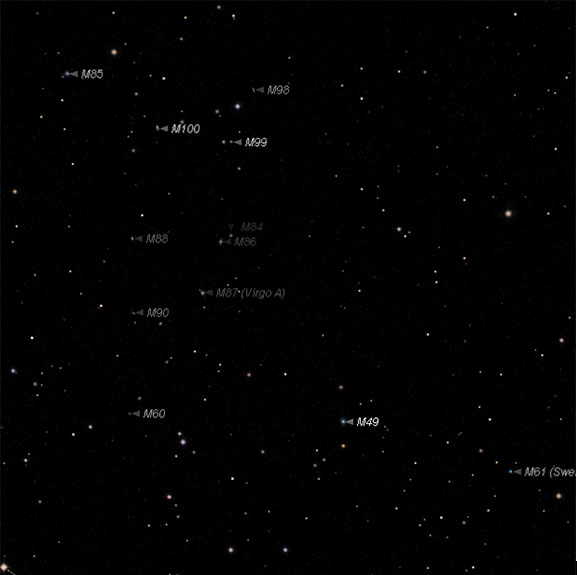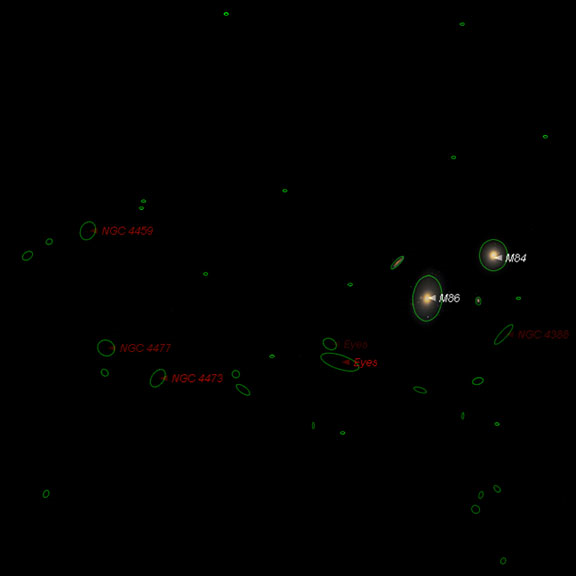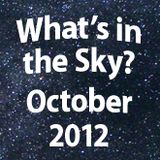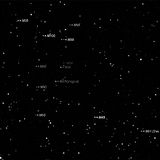- Telescopes
- Solar
- Mounts & Tripods
- Accessories
-
Astrophotography
- Sale Astrophotography
- New Astrophotography Products
- Astrophotography Kits
- Astrophotography Telescopes
- Astrophotography Cameras
- Astrophotography Solutions
- Autoguiding Solutions
- Astrophotography Accessories
- Camera Adapters & T-Rings
- Astrophotography Filters
- Focal Reducers and Field Flatteners
- Video Astrophotography
- Binoculars
- Sale
- Gift Center
- Shop by Brand
{"closeOnBackgroundClick":true,"bindings":{"bind0":{"fn":"function(){$.fnProxy(arguments,\'#headerOverlay\',OverlayWidget.show,\'OverlayWidget.show\');}","type":"quicklookselected","element":".ql-thumbnail .Quicklook .trigger"}},"effectOnShowSpeed":"1200","dragByBody":false,"dragByHandle":true,"effectOnHide":"fade","effectOnShow":"fade","cssSelector":"ql-thumbnail","effectOnHideSpeed":"1200","allowOffScreenOverlay":false,"effectOnShowOptions":"{}","effectOnHideOptions":"{}","widgetClass":"OverlayWidget","captureClicks":true,"onScreenPadding":10}
{"clickFunction":"function() {$(\'#_widget1216998458003\').widgetClass().scrollPrevious(\'#_widget1216998458003\');}","widgetClass":"ButtonWidget"}
{"clickFunction":"function() {$(\'#_widget1216998458003\').widgetClass().scrollNext(\'#_widget1216998458003\');}","widgetClass":"ButtonWidget"}
{"snapClosest":true,"bindings":{"bind0":{"fn":"function(event, pageNum) { PagedDataSetFilmstripLoaderWidget.loadPage(\'#recentlyViewed\', Math.floor(pageNum)); }","type":"scrollend","element":"#_widget1216998458003_trigger"}},"unitSize":220,"widgetClass":"SnapToScrollerWidget","scrollSpeed":500,"scrollAmount":660,"afterScroll":"","animateScroll":"true","beforeScroll":"","direction":"vertical"}
{entityCount: 0}
{"emptyItemViewer":"<div class=\"image\"><!-- --></div>\n <div class=\"info\">\n <div class=\"name\"><!-- --></div>\n <div class=\"orionPrice\"><!-- --></div>\n </div>\n ","imageThreshold":3,"pages":2,"dataModel":{"imageWidth":90,"cacheEntitiesInRequest":false,"dataProviderWidget":"com.fry.ocpsdk.widget.catalog.dataproviders.RecentlyViewedDataProviderWidget","imageHeight":90,"itemViewerWidget":"com.fry.starter.widget.viewers.ItemViewerWidget","direction":"vertical"},"pageSize":3,"widgetClass":"PagedDataSetFilmstripLoaderWidget","loadThreshold":1,"direction":"vertical"}
{"showSinglePage":false,"totalItems":263,"defaultPageSize":20,"paging_next":"Next","paging_view_all":"View All 263 Items","paging_view_by_page":"View By Page","pageSize":20,"paging_previous":"Prev","currentIndex":260,"inactiveBuffer":2,"viewModeBeforePages":true,"persistentStorage":"true","showXofYLabel":false,"widgetClass":"CollapsingPagingWidget","activeBuffer":2,"triggerPageChanged":false,"defaultTotalItems":263}
October nights will be full of celestial treats for amateur astronomers to see with binoculars and telescopes. Here are some of our top October stargazing suggestions:
Get Ready for Comet ISON's "Impact" - While we know Comet ISON will NOT actually hit anything, it's sure to make an "impact" of sorts on your observing schedule and in social media as the comet approaches the Sun and the Earth this fall and winter. Early- morning risers may be able to catch a glimpse of Comet ISON on October 1st when Comet ISON will appear about a degree northeast of Mars in the pre-dawn sky. If predictions are correct, Comet ISON will brighten rapidly after it passes Mars on its way towards to Sun throughout October, and should be visible in 4" or larger aperture telescopes all month long. If all goes well, this comet may reach naked-eye visibility by Halloween! "Trick or Treat" indeed! Be sure to check out our online Community section for updates.

The Sickle of Leo, Mars, Comet ISON and the Moon, October 1 , looking east in the pre-dawn morning sky. Sky Map from Stellarium
Time to (Star) Party! - The weekend of October 5th and 6th is a great opportunity to get out to a dark sky site with friends and family to enjoy spectacular sights and inky-black skies. The New Moon of October 4th will make it the darkest weekend of the month, so it's the best time to see objects beyond our solar system, and to get great views of planets too.
Jupiter Season Begins - Big and bright planet Jupiter will rise in the east around midnight in early October, and by about 10 PM near the end of the month. While Jupiter's brightness makes it easily visible to unaided eyes, try looking at the Jovian giant with a pair of 50mm or larger astronomy binoculars to coax out views of its 4 brightest moons; Io, Europa, Ganymede and Callisto. Check in on Jupiter every night to see these moons change position as the "dance" around Jupiter in their orbital paths. With even a small telescope, you'll see Jupiter's main equatorial cloud belts at high power, but step up to a 6" or 8" telescope and the show is spectacular.
Best Chance to See Distant Uranus - On October 3rd, gas-giant planet Uranus will at opposition (meaning the Earth will be positioned between Uranus and the Sun along a roughly straight line). This is when Uranus will be in its orbit's nearest point to Earth. Grab a pair of binoculars or a telescope and a star chart or StarSeek app to try tracking down this 6.5 magnitude planet, which is just below naked-eye visibility, in the constellation Pisces.
October Deep Sky Treats - In early October, catch your last glimpse of the year of the galactic center in the constellation Sagittarius, low in the southwestern sky, where you can track down four great emission nebulas - M8, the Lagoon; M20, the Trifid; M17 the Omega; and M16, the Eagle or "Star Queen" nebulas.
Two great planetary nebulas are still well-placed in October skies - M57, the Ring Nebula; and M27, the Dumbbell Nebula.
Look for interesting galaxy NGC 7331 in the northwestern section of the constellation Pegasus. With a 12" or larger aperture telescope, you may be able to tease out the galaxy's faint spiral arms.
Challenge Object: NGC 404 - Use your StarSeek app or a star chart to track down star Beta Andromeda in the constellation Andromeda. Carefully inspect the area just northwest of the star to see the faint glow of galaxy NGC 404, a small 11th magnitude dwarf galaxy that's approximately 10 million light years away from Earth. You'll likely need a 6" telescope at high power, but can you see it in a smaller telescope?
All objects described above can easily be seen with the suggested equipment from a dark sky site, a viewing location some distance away from city lights where light pollution and when bright moonlight does not overpower the stars. All objects have been verified by actual observations by Orion Telescopes & Binoculars Staff at Fremont Peak State Park, and/or Deep Sky Ranch, 60 miles and 90 miles respectively from San Jose International Airport, San Jose, CA.
{ sourceURL:'/catalog/includes/quicklook_miniproduct.jsp?entityId=103477&entityTypeId=4', sourceSelector:'' }
Here are a few of Orion's top picks for October stargazing:
October Meteors-The annual Draconid meteor shower peaks on the night of October 7th. While the Draconid isn't usually the strongest of meteor showers, it is known to have spectacular outbursts. Look towards the constellation Draco for your best chance to catch a glimpse of a Draconid meteor.
On the night of October 21st, you can feast your eyes on the Orionid meteor shower. Look towards the eastern sky, where the constellation Orion will rise after 10PM, for your best chance to see an Orionid meteor. As many as 50-70 meteors per hour will appear to radiate out of our namesake constellation as it peaks on the evening of October 21st.
The Milky Way-The brightest portion of our home galaxy will be visible in the constellation Cygnus. Are the skies where you are located dark enough to see it? With a star chart, trace the Milky Way from Cygnus to Cassiopeia. The cloudy galaxy keeps stretching all the way through Perseus towards Auriga, which is visible late in the evening.
Scan the Milky Way with Binoculars-You can see a lot in the Milky Way using just binoculars. Even if your skies are so light polluted that you cannot see the Milky Way with unaided eyes, use a star chart to determine its path in the sky. Using 50mm or larger binoculars, scan the path of the Milky Way for pleasing views of brighter star clusters and other interesting sights.
Big Jupiter-Rising about 10PM from the eastern horizon, big Jupiter will make its debut in October for the 2012/2013 observing season. Opposition occurs on December 3rd, but October will still provide great viewing opportunities of the gigantic planet and its brightest moons. While Jupiter is one of the brightest objects in the sky, easily seen even from the city with unaided eyes, Jupiter requires a telescope for good views. Almost any telescope will let you see the four brightest Jovian moons (Io, Europa, Ganymede and Callisto). Depending on the size of your telescope and the clarity and steadiness of the air, you may be able to observe Jupiter's striped equatorial cloud belts and perhaps even catch a glimpse of the Great Red Spot - an enormous persistent storm on the south border of the southern belt.
Fabulous Fall Star Clusters-Just west of Jupiter is the famous "open" star cluster Pleiades, also called M45 or Subaru. The Pleiades cluster is an excellent target for binoculars, since telescopes are usually too powerful to provide a view of the entire cluster in one field-of-view. About a hand's width southeast of the Pleiades, covering about 5 degrees of the sky is an association of brighter stars called the Hyades, with stars laid out in the shape of a "V", pointing west and slightly south. The Hyades is another great binocular object. Late in October evenings, low in the northeast sky, pick out the constellation Auriga; then using a star chart, see if you can pick out the three star clusters Auriga hosts - M36, M37 and M38 - all in a row and visible with binoculars or a telescope from a dark sky site.
Dazzling Globular Star Clusters-In northwest October skies, you can still catch a glimpse of M13, the Great Cluster in Hercules, which is one of the most famous globular star clusters. This giant ball of densely packed stars is very distinctive in any telescope, and is a spectacular sight in an 8-inch or larger aperture telescope.
In the eastern sky, off to the southwest of the Square of Pegasus is the grand globular cluster M15. This magnificent, densely packed ball of stars can be found with binoculars, but you'll need a telescope of at least 6" aperture to resolve individual stars within the cluster.
A Grand Galaxy-Located in the tiny constellation of Triangulum and just opposite the star Beta Andromeda is another splendid galaxy, M33. From a dark sky site, this galaxy is visible in 50mm binoculars, but a telescope at low power will provide the best views. M33 has very low surface brightness, so look when the Moon is down and from the darkest sky site you can find!
A Challenging Glowing Nebula-Making a small equilateral triangle with the stars Eta and Alpha Cassiopeia is the elusive Pac Man nebula - NGC 281. The Pac Man is a famous target for astrophotographers, but it is not easy to observe visually. From dark sky locations, you can pick out its faint glow with large binoculars, but a telescope at low power with the help of an Oxygen-III filter will show it best.
{ sourceURL:'/catalog/includes/quicklook_miniproduct.jsp?entityId=102351&entityTypeId=4', sourceSelector:'' }
While we are embedded in our Milky Way Galaxy and view its spiral arms arching over our skies year round, we are also part of a Local Group of galaxies. The Local Group is dominated by the Andromeda Galaxy, and our Milky Way. The Local Group is part of the larger group though, the Virgo Supercluster of Galaxies, with galaxies numbering in the thousands. Some of this mind-boggling, gravitationally-bound conglomeration of "island universes" is visible to us in binoculars and telescopes, primarily around March each year in and around the ancient constellation Virgo.
The anchor galaxy in the Virgo Supercluster appears to be the giant elliptical catalogued as Messier 87, Virgo A, NGC 4486 and known colloquially as M87. At a distance of approximately 53 million light years, it subtends 7.2x6.8 arc-minutes size. Its physical size is best compared to our Milky Way to obtain some relevance. M87's diameter is 132,000 light years and contains trillions of stars, including over 1,500 globular clusters. The Milky Way Galaxy is around 87,400 light years in diameter and has around 200 globular clusters among 200-400 billion stars. The M87 galaxy will be visible in 50mm binoculars or any telescope, a glowing oval shining at a bright apparent magnitude of 8.6.

Virgo Cluster Messier Objects
Bright galaxies abound in this cluster between Gamma Virginis, the great open cluster Melotte 111 in Coma Berenices, and Leo's back haunches near Denebola. Virgo contains eleven galaxies included in Charles Messier's now famous list of objects that were "not" comets. Instead, they are examples of the brightest and most detailed deep sky targets in our part of our universe. Scan the area and you literally can't avoid coming across several. Better still, Orion's Deep Map 600 shows them all, making their locations easy to get to. And there is no need to stop at eleven objects in this target rich area. Many galaxies found in the Herschel Catalogue are found here as well ? bright and easy ones!
Feel this is still not enough? Try Markarian's Chain within the Virgo Cluster and close to M87's location.

Chart Showing Markarian's Chain Anchored By M84/M86
This favorite is an awe-inspiring sweep of nearly a dozen galaxies, with bright Messier's M84 and M86 dominating one end, sweeping in a gentle arc over several degrees. Needless to say, the larger your telescope the more you'll see. The general Virgo Cluster environment comprises thousand of galaxies, and hundreds are within reach of amateur telescopes.
{ sourceURL:'/catalog/includes/quicklook_miniproduct.jsp?entityId=138015&entityTypeId=4', sourceSelector:'' }
{"showSinglePage":false,"totalItems":263,"defaultPageSize":20,"paging_next":"Next","paging_view_all":"View All 263 Items","paging_view_by_page":"View By Page","pageSize":20,"paging_previous":"Prev","currentIndex":260,"inactiveBuffer":2,"viewModeBeforePages":true,"persistentStorage":"true","showXofYLabel":false,"widgetClass":"CollapsingPagingWidget","activeBuffer":2,"triggerPageChanged":false,"defaultTotalItems":263}






Why Buy From Orion
- 30 Day Money Back Guarantee
- Safe & Secure Shopping
- Next Day Shipping
- Easy Returns
- Sale Price Guarantee
- Free Technical Support

Shop Our Catalogs
Check out our colorful catalog, filled with hundreds of quality products.
See our eCatalogsEmail Sign Up
- 800-447-1001
- Telescope.com
- © 2002- Orion Telescopes & Binoculars All rights reserved
- DMCA/Copyright
- Terms and Conditions
- Privacy & Security





About Orion Telescopes & Binoculars
Since 1975 Orion Telescopes & Binoculars has been offering telescopes for sale direct to customers. Now an employee-owned company, we pride ourselves on an unswerving commitment to best quality products, value and unmatched customer care. Our 100% satisfaction guarantee says it all.
Orion offers telescopes for every level: Beginner, Intermediate, Advanced, and Expert. From our entry level beginner telescopes for amateur astronomers to our Dobsonian telescopes to our most advanced Cassegrain telescopes and accessories, you can find the best telescope for you. Because we sell direct, we can offer you tremendous value at a great price. Not sure how to choose a telescope? Orion's Telescope Buyer's Guide is a great place to start.
Orion binoculars are known for quality optics at a great price. We offer binoculars for every viewing interest, including astronomical binoculars, compact binoculars, waterproof binoculars, birding binoculars, and sport and hunting binoculars.
Orion's telescope and astrophotography accessories will enhance your telescope enjoyment without breaking the bank. Expand your viewing experience with accessories ranging from moon filters to power-boosting Barlow lenses to advanced computerized telescope mounts. Capture breathtaking photos with our affordable astrophotography cameras. And when you're stargazing, Orion's telescope cases and covers, observing gear, red LED flashlights, astronomy books and star charts will make your observing sessions more convenient, comfortable and meaningful.
At Orion, we are committed to sharing our knowledge and passion for astronomy and astrophotography with the amateur astronomy community. Visit the Orion Community Center for in-depth information on telescopes, binoculars, and astrophotography. You can find astrophotography "how to" tips and share your best astronomy pictures here. Submit astronomy articles, events, & reviews, and even become a featured Orion customer!
sales, new products, and astronomy.








